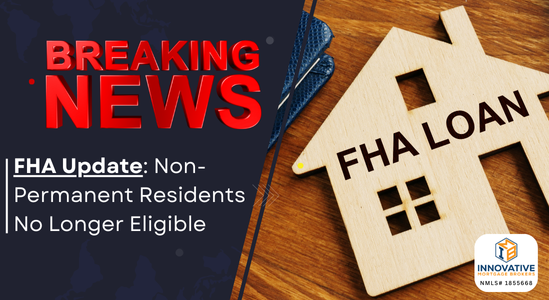Our approach to using technology for a smoother mortgage experience. In today's rapidly evolving world,…
FHA Loans and Self-Sufficiency: What You Need to Know for 3-4 Unit Properties in Pennsylvania
Self-sufficiency is a crucial concept in the Federal Housing Administration (FHA) mortgage guidelines for borrowers looking to finance 3- to 4-unit properties. Self-sufficiency refers to the property’s ability to generate enough rental income to cover its mortgage payments. This requirement ensures that the borrower can manage the financial responsibilities of the property, even if personal financial circumstances change, and that the property’s rental income will support the loan without the borrower having to rely solely on their own income.
This article will explain what self-sufficiency means in the context of FHA loans, how it is calculated, and why it matters specifically for buyers of 3- and 4-unit properties.
What Are FHA Loans?
FHA loans, backed by the Federal Housing Administration, are a popular option for homebuyers, particularly those who may not qualify for conventional mortgages. These loans are designed to make homeownership more accessible by offering lower down payment requirements, flexible credit qualifications, and more lenient debt-to-income ratios.
One of the most significant advantages of FHA loans is the ability to put down as little as 3.5% of the purchase price if you have a credit score of 580 or higher. For those with credit scores between 500-579, a 10% down payment is required. FHA loans are available for a variety of property types, including single-family homes, 1–4-unit properties, condominiums, and certain manufactured homes.
Additionally, FHA loans are designed for owner-occupied properties, meaning that the borrower must live in the property as their primary residence. This program is ideal for first-time homebuyers, as well as those looking to purchase or refinance homes with more relaxed qualification criteria than conventional loans.
FHA loans are not only for first-time buyers—they are also an excellent option for buyers of multi-unit properties, where rental income can help support mortgage payments. For 3- and 4-unit properties, the FHA requires that the property pass a self-sufficiency test, ensuring that it can generate enough rental income to cover its housing costs.
What is Self-Sufficiency in FHA Terms?
For 3- to 4-unit properties, FHA guidelines require that the property demonstrate self-sufficiency—meaning that the rental income from the units can cover the property’s mortgage payments. This rule is in place to ensure that multi-unit properties can support themselves financially, reducing the risk to lenders.
If you’re planning to buy a 3- or 4-unit property and live in one unit while renting out the others, the FHA wants to make sure that the rental income is enough to cover your total housing expenses, including principal, interest, taxes, and insurance (PITI). This is crucial because, for larger properties, the mortgage payments can be significant, and the FHA aims to protect borrowers from financial strain if the rental income is insufficient.
FHA Self-Sufficiency Test
The Self-Sufficiency Test is used to determine if the rental income generated by the property is enough to cover the housing expenses. Here’s how the FHA performs the test:
- Fair Market Rent Determination: An FHA appraiser will assess the fair market rent for each unit in the property, which is based on comparable rental properties in the area. This provides a realistic estimate of what each unit can generate in monthly rent.
- Rental Income Calculation: To calculate the property’s rental income for the self-sufficiency test, the FHA takes 75% of the total projected rental income. The 75% factor accounts for potential vacancies and maintenance costs, ensuring that the rental income estimate is conservative.
- Housing Expenses (PITI): The total monthly housing expenses are calculated, which includes principal, interest, property taxes, and homeowner’s insurance.
- The Self-Sufficiency Test: The property passes the self-sufficiency test if 75% of the projected rental income equals or exceeds the total monthly housing expenses. If the projected rental income is less than the housing expenses, the property fails the test and is ineligible for FHA financing.
Example of the FHA Self-Sufficiency Test
Let’s say you’re purchasing a four-unit property. The appraiser determines that each unit can rent for $1,200 per month, giving a total rental income of $4,800. Applying the FHA’s 75% rule, the property’s adjusted rental income for the self-sufficiency test is $3,600 ($4,800 x 75%).
Next, let’s assume your total monthly mortgage payment (including PITI) is $3,200. Since the adjusted rental income of $3,600 exceeds your monthly housing expenses of $3,200, the property passes the FHA self-sufficiency test, making it eligible for FHA financing.
Why Self-Sufficiency Only Applies to 3- and 4-Unit Properties
The FHA’s self-sufficiency test is only required for 3- and 4-unit properties because these types of homes are considered riskier for lenders due to their higher mortgage payments and reliance on rental income. Multi-unit properties can provide an excellent opportunity for borrowers to generate income while living in one of the units, but the potential for vacancies or unexpected expenses also creates added financial risk.
The self-sufficiency test ensures that even if the borrower experiences financial difficulty, the rental income from the other units will be sufficient to cover the mortgage payments. This requirement is not necessary for single-family homes or duplexes (2-unit properties), as the borrower is expected to rely more on their personal income for these smaller properties.
FHA Self-Sufficiency and Rental Income
When purchasing a 3- or 4-unit property, rental income plays a key role in determining whether the property passes the self-sufficiency test. Here’s how rental income is handled in FHA guidelines:
- Existing Rental Income: If the property is already occupied by tenants, the lender can use the actual rental income from the current leases to help calculate whether the property is self-sufficient. Lenders will require proof of current rental income, typically in the form of signed leases or rent rolls.
- Projected Rental Income: If the property is vacant or will have new tenants after the purchase, the FHA will rely on the appraiser’s fair market rent estimate to determine the rental income. The 75% adjustment is then applied to account for vacancies and maintenance costs, creating a conservative estimate of the rental income.
- Verifying Rental Income: Lenders will need documentation to verify any rental income. For properties with existing tenants, this includes current lease agreements and possibly rent receipts. For vacant units, the appraiser’s report and fair market rent analysis will be used.
FHA Borrower Requirements for Self-Sufficiency
In addition to meeting the self-sufficiency test, borrowers purchasing a 3- or 4-unit property with an FHA loan must also meet the standard FHA borrower requirements, which include:
- Occupancy Requirement: The borrower must occupy one of the units as their primary residence. FHA loans are intended for owner-occupied properties, meaning you can rent out the other units but must live in one unit.
- Credit Score and Down Payment: Borrowers must meet the FHA’s minimum credit score and down payment requirements. A minimum credit score of 580 is required for a 3.5% down payment, while borrowers with credit scores between 500-579 must make a 10% down payment.
- Debt-to-Income Ratio: The borrower’s debt-to-income (DTI) ratio will be considered to ensure they can afford the mortgage payments. The FHA allows for a DTI ratio of up to 43%, though exceptions can be made if compensating factors are present.
The Importance of the Self-Sufficiency Test for Multi-Unit Properties
The self-sufficiency test is crucial for both borrowers and lenders when it comes to financing 3- or 4-unit properties. Here’s why:
- Reduces Financial Risk for Borrowers: The self-sufficiency requirement ensures that the property can support itself through rental income. This reduces the likelihood that the borrower will face financial hardship if their personal income changes or if one or more units become vacant.
- Protects Lenders: From a lender’s perspective, multi-unit properties present more financial risk due to the higher loan amounts and reliance on rental income. The self-sufficiency test provides an extra layer of security, ensuring that the rental income will be enough to cover the mortgage even if the borrower encounters financial difficulties.
- Promotes Sustainable Homeownership: The FHA’s self-sufficiency guidelines promote long-term financial stability for homeowners. By ensuring that the property can generate enough income to cover its expenses, the FHA helps borrowers avoid overextending themselves financially and encourages responsible investment in real estate.
What Happens If a Property Fails the Self-Sufficiency Test?
If a 3- or 4-unit property fails the FHA’s self-sufficiency test, it will not qualify for FHA financing. In this case, the borrower has a few options:
- Increase the Down Payment: By increasing the down payment, the borrower can lower the monthly mortgage payments, which might help the property pass the self-sufficiency test. This, however, requires the borrower to have additional cash reserves.
- Find a Different Property: If the property cannot meet the self-sufficiency guidelines, the borrower may need to look for a different property that generates higher rental income or has lower housing expenses.
- Explore Other Loan Options: The borrower can also explore other financing options outside of FHA loans. Some conventional loans may have different guidelines for rental properties, although they often come with stricter credit and down payment requirements.
About Innovative Mortgage Brokers
At Innovative Mortgage Brokers, we are dedicated to making home financing simple, transparent, and tailored to your unique needs. With over 15 years of experience in the mortgage industry, we specialize in helping individuals and families secure the best mortgage solutions, whether you’re a first-time homebuyer or an experienced investor.
We understand that purchasing a property, especially multi-unit homes, can be complex, which is why we take the time to explain every step of the process. From navigating FHA loan requirements like the self-sufficiency test to finding financing options that work for your situation, our team is here to provide expert guidance.
As a local business with deep ties to the communities we serve in Pennsylvania and Florida, we pride ourselves on offering personalized service and long-lasting client relationships. At Innovative Mortgage Brokers, your homeownership goals are our top priority, and we’re committed to helping you achieve them with confidence and ease.
Conclusion
The FHA’s self-sufficiency requirement ensures that 3- and 4-unit properties can financially support themselves through rental income, reducing risk for both borrowers and lenders. By passing the self-sufficiency test, borrowers can confidently invest in multi-unit properties knowing that the rental income will cover the mortgage, promoting long-term financial stability.
If you’re considering purchasing a 3- or 4-unit property with an FHA loan, it’s essential to understand the self-sufficiency test and ensure that the property meets the guidelines.





